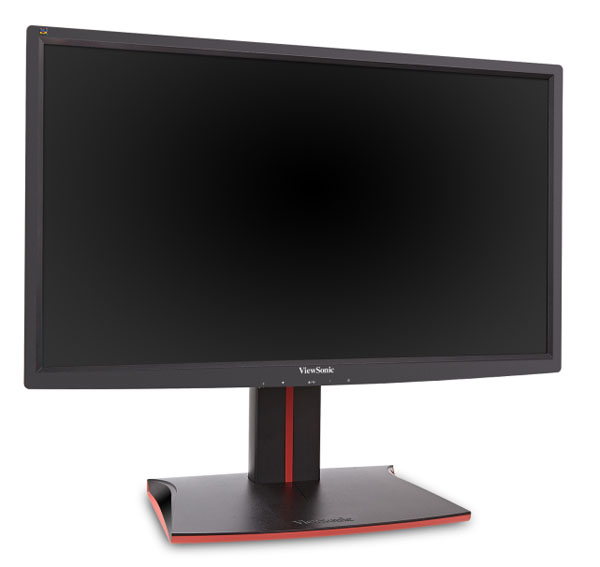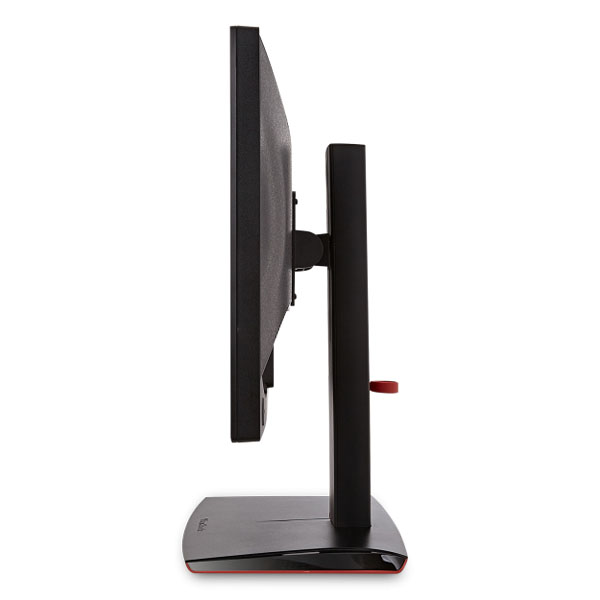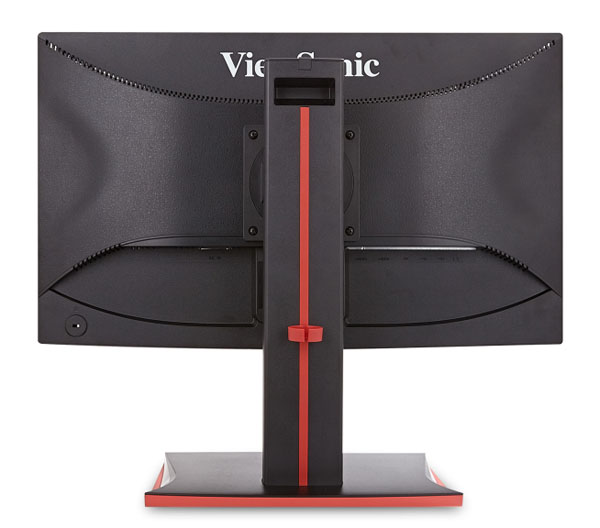ViewSonic XG2401 24-inch FreeSync Monitor Review
ViewSonic is the latest major display manufacturer to add FreeSync to its lineup. Today, we're testing the 24-inch XG2401. It's a FHD/TN screen with a 144Hz refresh rate and ultra-fast panel response.
Why you can trust Tom's Hardware
Packaging, Physical Layout And Accessories
Opening the double-corrugate carton and freeing the XG2401 from its dense foam packaging reveals a panel, base and upright that are built solidly with more heft than you might expect for their size. The upright is already attached to the panel. All you need to do is screw on the base with its captive bolt.
Included cables are USB 3.0, DisplayPort and an IEC cord for the internal power supply. The manual and necessary drivers are provided on a CD-ROM.
Product 360
The XG2401 exudes quality and has nice styling that befits a gaming display. Everything is covered with hard plastic but the base and upright have thick metal at their cores. A little red trim is provided to help set the monitor apart from rank-and-file business class screens. Full ergonomic adjustments are included with 4.7in (120mm) height, 27 degrees tilt, 175 degrees swivel and a portrait mode. When you turn the screen from side to side, the base moves along with it. ViewSonic has thoughtfully added felt pads to keep the moving parts from scratching your desktop.
The screen's front layer is 3H hardness, which is what we see on the majority of LCD monitors. It will reject reflections effectively without reducing image quality. There was no grain or softness on our sample.
Controls are via push-button and located underneath the front-center bezel. The keys click with a quality feel and are reasonably intuitive.
You can see that the base is generously-sized for stability. The upright has a clip-on cable organizer to keep your desktop tidy. There are no side-mounted USB ports, unfortunately. You'll find all the XG2401's connectivity on the bottom-facing jack panel.
Things look pretty clean around back with a couple of stylish curves that integrate the inputs and ventilation grills. The upright can be removed to expose a 100mm VESA mount. The speakers are rated at two watts per speaker, like most built-ins but they pump out much more volume than many of the displays we've reviewed. You won't hear much in the way of bass but at least there's some extra decibels there when you can't use an external sound system. Headphone users are accommodated by an output on the jack panel.
Get Tom's Hardware's best news and in-depth reviews, straight to your inbox.
You'll need to use DisplayPort for FreeSync operation but ViewSonic has also included two HDMI inputs. The USB hub is version 3.0 and includes one upstream and two downstream ports. The audio jack is for headphones or powered speakers.
Current page: Packaging, Physical Layout And Accessories
Prev Page Introduction Next Page OSD Setup And Calibration
Christian Eberle is a Contributing Editor for Tom's Hardware US. He's a veteran reviewer of A/V equipment, specializing in monitors. Christian began his obsession with tech when he built his first PC in 1991, a 286 running DOS 3.0 at a blazing 12MHz. In 2006, he undertook training from the Imaging Science Foundation in video calibration and testing and thus started a passion for precise imaging that persists to this day. He is also a professional musician with a degree from the New England Conservatory as a classical bassoonist which he used to good effect as a performer with the West Point Army Band from 1987 to 2013. He enjoys watching movies and listening to high-end audio in his custom-built home theater and can be seen riding trails near his home on a race-ready ICE VTX recumbent trike. Christian enjoys the endless summer in Florida where he lives with his wife and Chihuahua and plays with orchestras around the state.
-
darthtomas_admin 1st lol. On the serious note, is the panel native 8-bit one? That contrast ratio looks too good to be true .....Reply -
eklipz330 48hz isn't optimal but it sure as hell is still damn good. 20hz would be perfect.Reply
freesync is kicking ASS. i hope nvidia continues to rest on their laurels as AMD picks up more market share and becomes a more formidable competitor. -
karloe CONS: 48Hz lower FreeSync --> Christian, didn't you hear about Low Framerate Compensation?Reply
144 > 2,5x48 --> meaning LFC is on so the actual FreeSync range is 0-144Hz -
ubercake Great contrast. Definitely a plus for gaming. If you have the goods to keep framerates above 48 consistently, this monitor looks like a catch.Reply -
darthtomas_admin Christian, could you confirm screen part number ( is it real 8-bit one or 6-bit+dithering ) please.Reply -
sillynilly Another low price monitor good for a low range gaming rig. Not my cup of tea, but cool that the market isn't abandoning the cheaper options for peeps that don't run the latest, greatest parts in their rigs.Reply -
slashdot Not sure why people diss the "low price monitor", but Freesync and Gsync needs to encompass a larger range of price point. Faster value adoption means paying less "premium" for Freesync/Gsnyc in the top range. Otherwise, adaptive sync would be niche tech that would die in a year and two, and the so-called "premium feature" would no longer be supported.Reply



